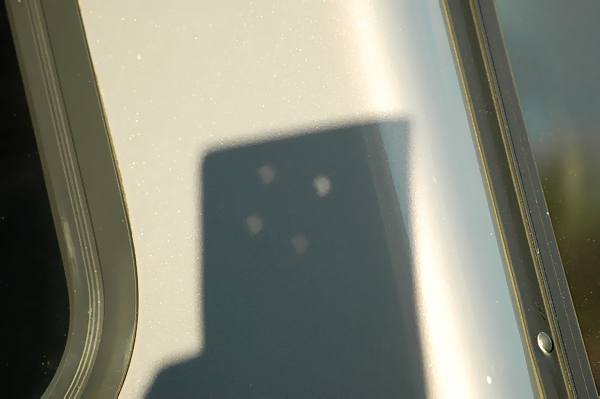
Solar eclipses are fairly rare, so it is always a treat to be able to observe one. The main challenge is to find a way to see the eclipse, without damaging your eyes. While there are special filters that let you watch an eclipse, there is also a very safe, very simple way to observe it with materials that you probably already have.
You will need:
- a solar eclipse
- a piece of aluminum foil
- a pen or pencil
- a smooth, flat piece of paper
- a colander or a piece of pegboard (optional)
When viewing an eclipse, DO NOT LOOK AT THE SUN! There is a reason for this. First, you should never look directly at the sun, as it can damage your retina. If you have ever used a magnifying glass to burn a piece of paper, think of the lens in your eye as a magnifying glass, and your retina is the paper.
During an eclipse, the visible light is much less, but there are still plenty of infrared light, which is what causes the damage. Since the visible light is less, the pupil in your eye stays open wider, letting in more of the harmful rays, making eye damage much more likely. The same goes for dark glasses. They may filter out the visible sunlight, giving the illusion that they are protecting your eyes, when in fact they may be letting most of the harmful, invisible rays enter the eye. Only look directly at the Sun if you have filters that were made specifically for that purpose.
To observe the eclipse safely, you want to look at an image of the sun, instead of the sun itself. We will use a pinhole, similar to the pinhole we have used in past experiments, such as the Pinhole Eyeglasses video . Cut a piece of foil about 6 inches square. Use the point of the pen to make a small hole in the center of the foil. Hold this about a foot above your piece of paper, with the sun (or a lamp) shining through the hole onto the paper. This will form a circle of light on the paper. Now, you may be thinking that the round circle is due to the round hole we made. To investigate that, watch the circle of light. Hold your finger about a foot above the foil and move it around. Looking at the circle of light, you will see the image of your finger moving over it. That is similar to what will happen during the eclipse, with the moon taking the place of your finger. The pinhole is acting like a lens, projecting an image of the Sun on the paper. As the Moon moves in front of the Sun, you will see that round dot of light change its shape.
To see this with many images, hold the colander about a foot above the paper, letting the sunlight shine through the holes. On the paper, you will see lots of tiny circles of light. Now you might think that the dots were round due to the round shape of the holes. Many colanders have square holes, but you still get round circles of light unless you hold the colander very close to paper. What you are seeing is an image of the sun (or the light bulb in the lamp). As the eclipse begins, you will notice something happening to the circles of light. You will see the shadow of the moon slowly eat away into the side of each circle, forming many crescents of light.
I first saw this in a much more amazing way. I was walking under a tree during an eclipse. If you have walked in the woods, you will notice that the light shining through the leaves often forms lots of small circles of light on the forest floor. The spaces between the leaves form the "pinholes" to project the image of the Sun on the ground. That day, the forest floor was covered with crescents of light, letting me safely watch the eclipse while continuing my hike.
